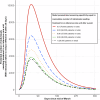A unified framework for diagnostic test development and evaluation during outbreaks of emerging infections
- PMID: 39658579
- PMCID: PMC11632097
- DOI: 10.1038/s43856-024-00691-9
A unified framework for diagnostic test development and evaluation during outbreaks of emerging infections
Abstract
Evaluating diagnostic test accuracy during epidemics is difficult due to an urgent need for test availability, changing disease prevalence and pathogen characteristics, and constantly evolving testing aims and applications. Based on lessons learned during the SARS-CoV-2 pandemic, we introduce a framework for rapid diagnostic test development, evaluation, and validation during outbreaks of emerging infections. The framework is based on the feedback loop between test accuracy evaluation, modelling studies for public health decision-making, and impact of public health interventions. We suggest that building on this feedback loop can help future diagnostic test evaluation platforms better address the requirements of both patient care and public health.
© 2024. The Author(s).
Conflict of interest statement
Competing interests: The authors declare no competing interests.
Figures



References
-
- Regulation (EU) 2017/746 of the European Parliament and of the Council of 5 April 2017 on in vitro diagnostic medical devices and repealing Directive 98/79/EC and Commission Decision 2010/227/EU. http://data.europa.eu/eli/reg/2017/746/oj (2017).
-
- European Medicines Agency. Guideline on clinical evaluation of diagnostic agents (European Medicines Agency, 2009).
-
- FDA. Statistical Guidance on Reporting Results from Studies Evaluating Diagnostic Tests - Guidance for Industry and FDA Staff. https://www.fda.gov/regulatory-information/search-fda-guidance-documents... (2007).
Publication types
Grants and funding
LinkOut - more resources
Full Text Sources
Miscellaneous

